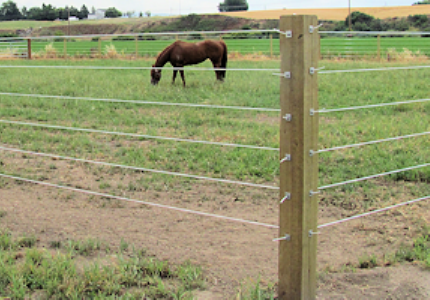 Modern fencing goes far beyond the old wood rail fence or barbed wire varieties. A wide range of fencing products and systems, built to enhance the safety of the horses behind them as well as the aesthetic appeal of the properties on which they are installed, are now available. With all of these options, however, choosing a fence type that appeals to you can be overwhelming. Researching safety features, pricing, materials, and durability of each different product can leave even the most discerning consumer feeling confused. It may be useful to learn about some basic types of safe horse fencing and research further based on what you feel is a better fit for your property and budget.
Modern fencing goes far beyond the old wood rail fence or barbed wire varieties. A wide range of fencing products and systems, built to enhance the safety of the horses behind them as well as the aesthetic appeal of the properties on which they are installed, are now available. With all of these options, however, choosing a fence type that appeals to you can be overwhelming. Researching safety features, pricing, materials, and durability of each different product can leave even the most discerning consumer feeling confused. It may be useful to learn about some basic types of safe horse fencing and research further based on what you feel is a better fit for your property and budget.
Polymer Strand Fence
At 4mm in diameter (photo above), this option for fencing is small but mighty. It does not contain any wire, so if a horse becomes entangled in it, it does not tighten like a wire fence would. This type of fence has 1250 pound breaking strength, and will bounce back to its original shape when tested. Due to the nature of the material this fence is made of, this fence will not sag if kept properly tensioned.
Concerns for this type of fencing material are few but important to mention. It should not be run through metal posts unless it is secured so it will not come into contact with these posts. A protective sleeve should be used when running the strands through any type of post. Also, a strand or two of electric rope or electric rail being used in combination with this fence is not necessary but advisable due to the stretching capacity of the strands and the tendency for horses to lean on the fence.
For more information about polymer strand fencing please visit Finish Line Fence or Cameo Fencing.
High-Tensile Polymer Rail Fence
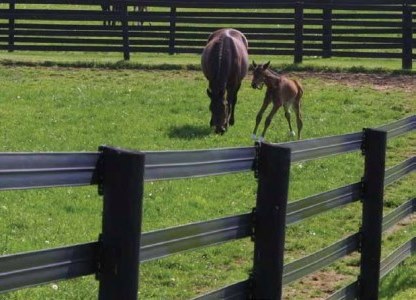 High-tensile polymer fence (photo right) boasts a wide flexible rail for excellent visibility. Each rail contains three high-tensile steel wires covered with a tough polymer coating. Centaur HTP fencing systems offer superior durability with features such as a 4,200-pound break strength, and continuous tension, regardless of temperature fluctuation (means a lot less maintenance).
High-tensile polymer fence (photo right) boasts a wide flexible rail for excellent visibility. Each rail contains three high-tensile steel wires covered with a tough polymer coating. Centaur HTP fencing systems offer superior durability with features such as a 4,200-pound break strength, and continuous tension, regardless of temperature fluctuation (means a lot less maintenance).
Rail fencing is also built to be aesthetically pleasing, giving the appearance of traditional wood or PVC rail fence, without the high maintenance that goes along with those types of fencing. Installation of a rail or two of HTP fence can enhance the strength and visibility of other fence types while still looking good.
For more information about HTP fencing please visit Centaur Fencing or Horse Rail.
High-Tensile Polymer Live Electric Rail
Hot Rail HTP fence offers one of the safest electric fencing options on the market today. A single hot wire being installed on the fence can dramatically increase the risk of entanglement and injury. Hot Rail HTP increases visibility and offers a broad, flexible rail instead of an additional live wire that could cause problems. If a horse encounters the fence by mistake, rather than being cut by a smaller wire, the broad rail will spread shock absorption, making injury far less likely. One or two rails of this fencing makes a great addition to most fence types to keep horses from leaning.
High-Tensile Polymer Lines
Still in the high-tensile wire family, companies like Centaur Fencing and Gallagher carry high-tensile steel wires that are coated in a polymer material to create a safer fence for your horses. Although high tensile wires are typically not the safest, the polymer coating drastically reduces any cutting or slicing that could be caused in an entanglement and even increases visibility (generally the polymer coatings are white).
Most manufacturers also produce a “hot-cote” version of their polymer tensile wire, meaning it is wrapped in a polymer that is either entirely or partially conductive (typically a line of conductive material along the length of the polymer. This allows you to have the safety and visibility of the electric polymer with the strength of the high-tensile steel (around 1400 lbs per wire on centaur’s product).
For additional information about HTP lines please visit Centaur Fencing and Gallagher Fence.
Non-Climb Mesh Fence (Keepsafe)
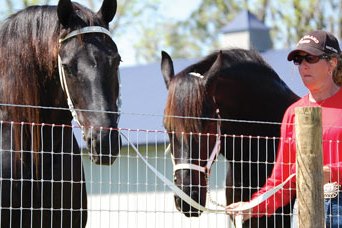 Keepsafe (photo left) belongs to the “non-climb fence” family. Galvanized wires constructed into a v-mesh pattern offer flexibility upon impact, reducing risk of injury. Properly installed and tightened, this type of fence virtually eliminates the risk of limb entanglement, as the spaces in the mesh are much too small for a horse to fit a hoof through.
Keepsafe (photo left) belongs to the “non-climb fence” family. Galvanized wires constructed into a v-mesh pattern offer flexibility upon impact, reducing risk of injury. Properly installed and tightened, this type of fence virtually eliminates the risk of limb entanglement, as the spaces in the mesh are much too small for a horse to fit a hoof through.
Installation of this type of fence with a solid or electric top rail would be advisable, to prevent horses from leaning over the fence. Proper bracing is of utmost importance to ensure that the mesh fence remains taut.
For additional information about non-climb mesh fence please visit Redbrand and Ramm Fence.
Wooden Rails
Wooden rails are by far the most aesthetically pleasing horse fencing option (arguably, when compared to an HTP rail). However, there are some considerations to keep in mind if you choose a traditional wooden fence.
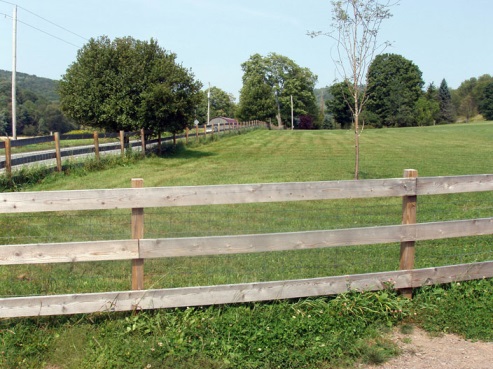 First off, wooden rail fences (photo right) are more expensive to install than most other fencing, sitting at around $3-5 per foot (when compared to HTP rails which are under $1.00/ft.).
After installation is when even more costs begin to accrue because wood fence tends to require a lot of maintenance and replacement after a few years.
First off, wooden rail fences (photo right) are more expensive to install than most other fencing, sitting at around $3-5 per foot (when compared to HTP rails which are under $1.00/ft.).
After installation is when even more costs begin to accrue because wood fence tends to require a lot of maintenance and replacement after a few years.
Beyond the simple costs, wood fence can actually be a danger to your horse. Wood rails can snap and splinter when collided with, and those splinters can do a number on your horse.
If you do choose a wood fence, it may be advisable to use an electric line (wire, tape, braid, htp wire) along the top of the fence, to prevent leaning, cribbing, and (hopefully) collisions as best as possible.
Note: When it comes down to it, vinyl fencing (typically residential-type fencing and not to be confused with HTP) has the same advantages and disadvantages as wood fencing. High install cost, high maintenance, and higher risk of danger to your horse due to splintering.
For more information about wooden rail fencing please visit Penn State University and Utah State University.
Tape & Braid Fencing
Tapes (a wider, woven fencing type, typically electric) and braids (a thicker, braided, rope-like fence type) are both generally better for use as temporary fencing. Although they can successfully contain a trained horse, there is no “physical” barrier preventing your horse from going right through your fence line.
Tapes (photo below) range from ½-inch variations up to 1½ inches or even more. The strongest advantage of tapes are the increased visibility (especially on the 1½-inch variations). Electrically conductive wires are then woven through the length of the tape to make it electric-compatible.
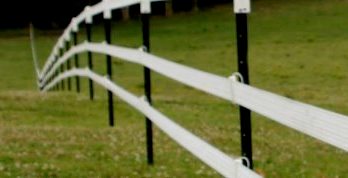 Typically, braids are known for their increased visibility as well, seeing as they are significantly thicker than alternative wire or line fencing options. The construction of braid fencing is very similar to tapes, with the only real difference being the physical shape of the braid vs. the tape.
Typically, braids are known for their increased visibility as well, seeing as they are significantly thicker than alternative wire or line fencing options. The construction of braid fencing is very similar to tapes, with the only real difference being the physical shape of the braid vs. the tape.
One thing to pay attention to when buying both these types of temporary fencing is the quality of the conductive materials in the weave. For example, copper is generally accepted as the most conductive (meaning less resistance and less energy required to power your fence) as well as the most resistant to corrosion.
One last thing to consider is that you could easily combine a tape or braid (or a wire for that matter) with any one of the other fencing types to make it electric at a lower cost. There is no “rule” that says you need to consistently use only one fencing type across your whole property. In fact, I’ve seen very successful fence builds where a cheaper, less “pretty” fence was used to fence in the “back 40” portion of the property, then the more visible portions are lined with an htp rail or wood/line combo.
For more information about tape or braid fencing please visit Gallagher Fence and Zareba.
Conclusion
In your search for safe fencing, non-biased customer reviews can be one of your most advantageous tools. These reviews will tell you a lot more about maintenance and lifespan of the fence products you are considering. Many fence brand websites share reviews on their websites, but it may also be useful to search for more personal reviews locally, as well as through online forums and social media.
Photos provided by Centaur Fencing
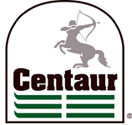 ____________________________________________________________________
____________________________________________________________________
The experts at Centaur Fencing are available Monday through Friday every week of the year to help you with all your horse fencing needs. All we do is horse fencing and every one of our staff is qualified to help you put together a plan for a horse fence that fits your property and your horses' needs. Email us at info@centaurfencing.net or visit www.centaurfencing.net/pages/get-a-free-sample to get a free sample sent to you.

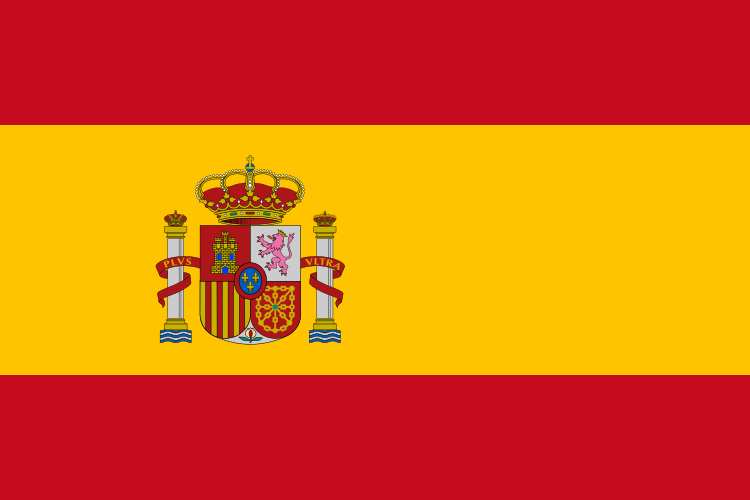
Log in to join the conversation.